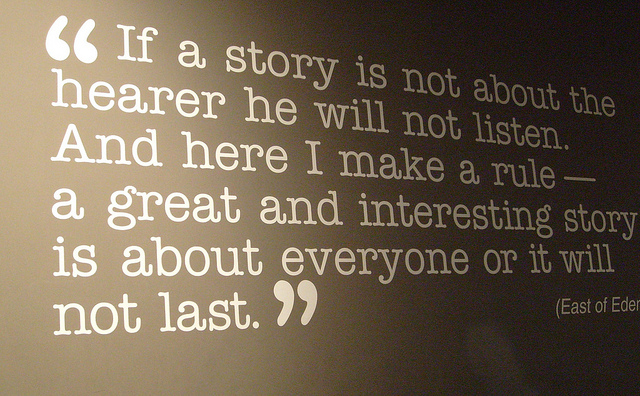
How can visual media bring healthcare social media to life?
This edition of the Healthcare Social Media (HCSM) Review explores visual storytelling. Storytelling alone could have been our sole focus, but the increasing prominence of visual media, especially across social networking sites, couldn’t go unnoticed. Posts span visual communication research, content strategy, and storytelling techniques.
- Tracy Granzyk calls attention to a recently published study that demonstrates how visual storytelling supports patients facing dementia.
- A new article published in IEEE’s Transactions on Visualization and Computer Graphics, The Five Ws for Information Visualization with Application to Healthcare Informatics, offers
a framework for improving the usability of visual information.
- CommunicateHealth looks at which is better for visual communication: a photo or an illustration. They suggest using an illustration to convey an abstract idea or process and a photo to evoke emotion. CH also shares the resource, The Noun Project, which offers a free collection of icons, symbols and simple graphics.
- Christine Russel and Rebecca Stern recently co-hosted the Health Care Leadership (#HCLDR) Twitter chat with a focus on visual media. Participants shared how visual media can “put a face” to narratives, issues and diseases, provide patient education and support patients
in making informed decisions. Many participants mentioned how visual media can help expand access to health messaging.
- Ragan Healthcare outlines six ways hospitals can shape their brand through the use of visual storytelling.
- Ash Rishi, CEO of a U.K.-based digital marketing agency, argues that storytelling can help increase patient engagement. His suggestions? Reveal something personal, take patients on a transformational journey from beginning to end and tap into emotion.
- The Content Marketing Associations shares 7 Steps to Telling the Perfect Story in the form of an infographic. You may also recall when former-Pixar storyboard artist tweeted Pixar’s 22 Rules of Storytelling. Both are helpful nuggets of information.
- As we know, terminology matters. In looking to harness visual media, perusing the field of digital storytelling is another avenue for inspiration. You may also be interested in joining the Transmedia for Good Facebook group, spearheaded by the talented Nedra Weinreich.
Inspirational Models
I keep a Pinterest board of inspirational models to help spark new and evolved applications of using social media for good. Recent examples of visual storytelling in healthcare social media include:
- Positively Aware Magazine’s #ADayWithHIV Campaign
- The Waiting Room’s Multi-Channel, Storytelling Project
- DefeatDD’s Toilet Calendar Contest (as a follow-up to their Poo-Haiku Challenge)
- National MS Society’s User-Generated Stories
Visual media is just one tool in the storytelling toolbelt. From Google Helpouts for healthcare, to robot doctors and dreaming of 3-D language development, the possibility in the types of potential tools continues to expand.
What are your favorite examples of visual storytelling through social media?
]]>
How can we harness the power of visual storytelling in healthcare social media?
65% of the American population are visual learners. You may want to read that a second time. And should we be surprised? Photos and videos (visual, multimedia content) serve as social currencies online as evidenced by the infographic explosion combined with social network sites bringing this content to bear: Instagram, Tumblr, and Pinterest to name a few. Even Twitter recently updated to offer more visual tweets.
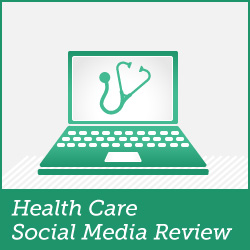 On Wednesday, Nov. 20, SocialButterfly will again host the Health Care Social Media Review, the peer reviewed blog carnival focused on health care social media, curating the latest research and resources shared by our fellow colleagues. You’re invited to add your voice to the dialogue.
On Wednesday, Nov. 20, SocialButterfly will again host the Health Care Social Media Review, the peer reviewed blog carnival focused on health care social media, curating the latest research and resources shared by our fellow colleagues. You’re invited to add your voice to the dialogue.
The theme for issue #41 is visual storytelling:
- Discuss recent visual communication research (or needed research) in this area
- Highlight helpful tips and tricks for integrating visual media into your content strategy
- Identify inspirational models of people, organizations and campaigns who you think are effectively storytelling through visual media
- Share storytelling techniques and strategies that may be applicable to health care social media
How to Submit:
Email a link to your post or posts (no more than two submissions per author) by 12pm (ET) on November 19.
Format your submission email as follows:
- Email Subject Line: Health Care SocialMedia Review
- Blog Title
- Blog URL
- Post Headline
- Permanent link to post
- Your Name: Name, Username, Nickname, or Pseudonym
- Description or brief excerpt
Learn more about the HCSM Review by visiting HealthWorks Collective or follow @healthworkscollectiv on Twitter. We look forward to your posts!

Where do you turn for the latest research on the impact and influence of social media?
This edition of the Health Care Social Media Review (HCSM) provides the latest research your fellow colleagues are studying by highlighting social media research and related resources. Whether you’re talking with your stakeholders, board, manager, customer, or colleague, being well-versed in the research equips you with the evidence and theory needed to optimize your impact.
I have yet to attend a social media workshop or presentation where someone doesn’t ask about resources relatesd to social media research. (And thank goodness, right? We need to stay curious.) A number of people want research to help them understand the pros and cons of social media and translate how that knowledge applies to their mission. Here’s what our peers had to share this week:
Rich Resources
- Pew Internet & American Life Project: This is the main go-to for many, given Pew’s look into at the impact and use of technology across demographics. Did you see their June 5 report sharing that 56% of Americans own a smartphone? Their May 21, 2013 report may also be applicable to you as it focused on teens, social media and how they view privacy.
- DigiHealth Pulse: Enskeptos is newer to the scene but offers insights from their ongoing tracking study of digital health consumers. The study looks at 39 health topics and 11 different health behaviors to help us better understand how active digital health consumers consume, perceive and react to online health information.
- Journal of New Communications Research: The Society for New Communications Research (SNCR) is always a must-watch as they support and fund research. Both Fard Johmar (of Enskeptos) and Craig Lefebvre have participated in SNCR, helping bring health care social media research to bear.
- CDC’s Health Communication Digest: Looking for the latest peer-reviewed literature? CDC offers up its Health Communication Digest, highlighting a findings of note, many of which relate to health care social media.
- PWC, Comscore, eMarketer and Nielsen A number of organizations offer up research and studies that can help further guide our work. For example, many of you may recall PWC’s report, “Social Media ‘Likes’ Health Care”.
- #SMMStandards: If you haven’t bookmarked this group, you’ll want to as the group is working across industries to develop standards in social media measurement .
Laying the Groundwork
This topic for this edition was inspired by some of my own social media research activities. Craig Lefebvre and I recently published a review of the research and evidence for the use of social networking sites (SNS) to improve cardiovascular health in the April 30, 2013 edition of Circulation, a journal of the American Heart Association. The paper, titled Digital Social Networks and Health, also offers guidance on the potential of creating social health experiences while also proposing a research agenda for better understanding the use of social media in health.
Not shortly thereafter, Damon Centola of MIT published a follow-up article, titled “Social Media and the Science of Health Behavior“, also in Circulation. Centola’s article is a great read for those looking to understand and explore new research areas thanks to the opportunities social media affords. He also shares a case study from the Healthy Lifestyles Network that helps drive home the potential of what can be when you combine the power of social networks with social media–a key theme we share.
Diving In
Here are some additional research nuggets submitted to the review:
- The Cancer Conversation Grows and Narrows: Greg Matthews shares insights from The MDigitaLife Social Oncology Project 2013, which tracked more than 16 million cancer-related conversations. He shares: “…increasingly, there isn’t just one cancer conversation – there are distinct and recognizable conversations happening now about dozens of different cancer varieties – each with its own participants, preferred channels, media coverage and physician influencers.” Having done some research into the HIV conversation online, I can share that this statement also applies to the evolved HIV discussion online and makes me wonder what other health topics and diseases are becoming more sophisticated and what that means for our work.
- Here’s a Conundrum: Hispanics are some of the greatest users of mobile and social media technologies. And despite all our work in health care social media, over half of Latinos don’t know key aspects of the new health care law. This is our fail. At the same time, it’s a great opportunity for change. Any takers?
- Twitter and Vaccine Information = A Good Mix: According to a new study, Twitter was found to be a popular and reliable source for vaccine information. Of note, researchers found that over the more than 2k tweets analyzed, 54% conveyed a neutral position on vaccinations.
- Is Social Media Helping or Hurting? Researchers in Canada are looking into the impact of social networks and social networking sites on mental health, putting a large focus on Facebook. I’ve written before on conflicting findings regarding Facebook’s impact on our health, so I can’t wait until the findings of this study are released.
- People Want Online Video, but Aren’t Sure How to Get It or Measure Its Impact: Given increasing interest in online video and YouTube’s latest design update, you may be interested in the latest report, “Into Focus: Benchmarks for Nonprofit Video and a Guide for Creators“. This is the first report of its kind and was compiled by See3 and Edelman in collaboration with YouTube’s Nonprofit Assistance Program.
- Text4Baby Works, Still: A new report came out finding that the Text4Baby program is beneficial to women and moms. This may also be one reason why the program has expanded its offerings into video. In reviewing digital health solutions, email and/or text reminders over and over are found to be effective in individual pilots and projects. Hopefully, this added research will support similar types of efforts. Email may not be as “sexy” as social media, but it is effective.
Coming Soon
While the body of research grows, some organizations are joining the effort. One such organization is the Human Factors group which is hosting a social meida research competition with a $10,000 prize purse. What about you – do you have any social media research activities planned for 2013?
Thank you again for your contributions to this edition. Health Care Social Media Review has information about the next edition’s host and instructions on how to submit your posts for review in future editions.
]]>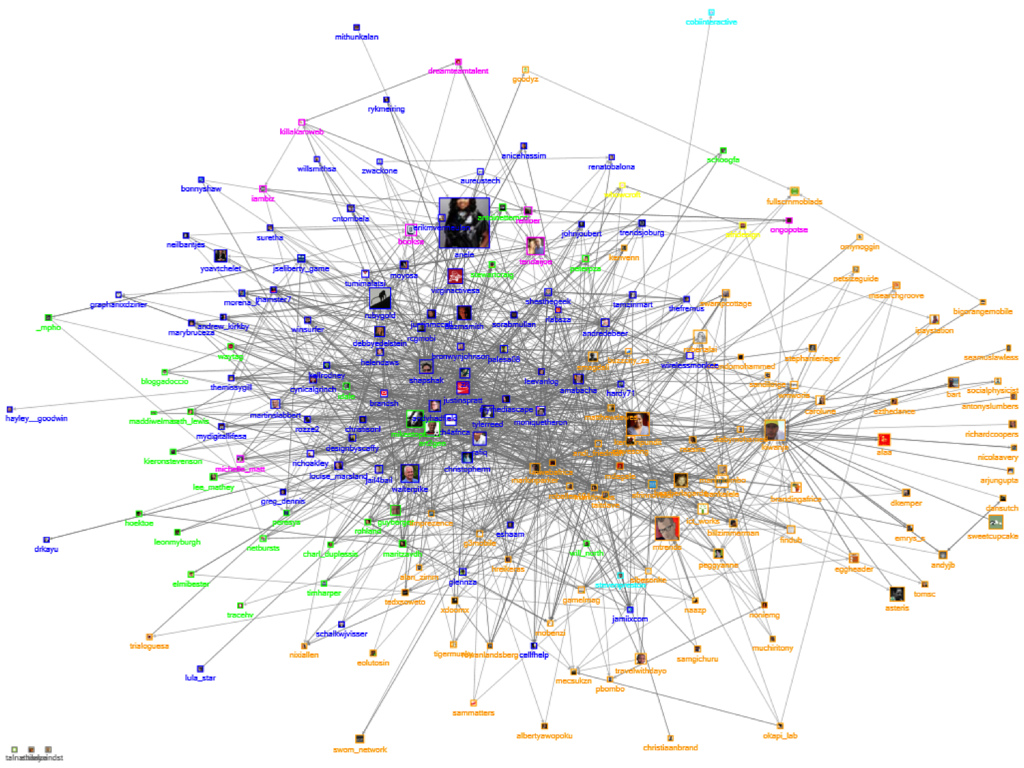
What’s the latest social media research you’re reading?
Weekly, Daily, a new social media research report or study is released, competing for our attention and analysis. What are some of the latest research nuggets you’ve found most useful? And what are some of the information sources that help you stay up-to-date as the research works to catch up with practice?
On Wednesday, June 5, SocialButterfly will again host the Health Care Social Media Review, the peer reviewed blog carnival focused on health care social media, curating some of the latest research and resources shared by our fellow colleagues.
Email a link to your post or posts (no more than two submissions per author) by 5pm (ET) on June 3.
Format your submission email as follows:
- Email Subject Line: HealthCare SocialMedia Review
- Blog Title:
- Blog URL:
- Post Headline:
- Permanent link to post:
- Your Name: Name, Username, Nickname, or Pseudonym
- Description or brief excerpt:
Learn more about the HCSM Review by visiting HealthWorks Collective or follow @healthworkscollectiv on Twitter. We look forward to your posts!
]]>
How social is your state’s health department?
Newly announced, the “Social Media for Public Health” Twitter chat will be hosted the second Tuesday of every month at 1pm, EST. The host account, @phsocmed, already has over 50 followers and participants are invited to use the hashtag #SM4PH to chime in. But just how social are our health departments anyway? Research shows we still have a ways to go.
A One-Way Conversation
A March 2012 study found that 60% of state health departments (SHD) used as least one social media platform. The study itself looked to provide an initial baseline on SHD social media adoption and usage to increase its effectiveness in the long run.
Results found that of state health departments using social media:
- 86.7% has a Twitter account
- 56% a Facebook account
- 43% a YouTube account
Perhaps not surprising to many of us in public health, results also showed that most social media was used for disseminate information with “very little” interaction with fans and followers. On average, one post a day was the average with (depressingly), over a quarter of Facebook posts being auto-feeds originally posted to a third party, resulting in 86% of the Facebook posts assessed receiving no comments and 45% had no likes.
Benchmark = Starting Point
Previous to this study, no baseline measure of social media adoption and usage was available for state health departments to benchmark their progress. According to the study’s research, “social media use by public health agencies is in the early adoption stage”. SHD are using social media as a channel to distribute information rather than creating conversations and building connections.
If interested in social media benchmarks, the Social Media for Global Health Work Group recently published its results for benchmarking social media use among projects and organizations working in global health and development. NTEN also offers a Social Networking Benchmarks Report that looks at nonprofits specifically.
Baby Steps
We have social health states, but they have yet to fully put the social into their social media use. Perhaps learning opportunities like the new “Social Media for Public Health” Twitter chat can help bridge the gap.
What’s the biggest opportunity you see for state health departments using social media?
photo credit: Luke Redmond via photopin cc
]]>
This edition of the Health Care Social Media (HCSM) Review explores recent discussions and research on how social media collides with health promotion, prevention and wellness efforts. While a number of submissions highlighted social media, many spoke more to digital health as a whole vs. social media specifically, an important differentiation. So, let’s explore that first.
Digital Health Takes Center Stage
In health care social media discussions, lines quickly blur as people share and develop ideas that relate to possible close cousins of social media including big data, wearable tech or mobile technology. Refer to this article by Healthy Startups on the 100 Trends That Will Change Healthcare in 2013 for a full list of potential relatives.
Or, people start considering “social media” implementation and evaluation strategies when they actually want to look more broadly at a program’s full digital strategy and communication activities. Now, we have Forbes declaring 2013: The Year of Digital Health and our Ogilvy colleagues chiming in on the discussion.
With the close of the Digital Health Summit at the Consumer Electronics Show in Vegas earlier this month and next month’s Digital Health Extravanganza, the conversation isn’t slowing down anytime soon. The fast-growing 14,000+ member Digital Health LinkedIn group provides further evidence.
(…but What Is It?)
Social media and all its relatives – is that digital health? Yes. Some groups have put together more scholarly definitions:
- Digitome: Digital Health is the use of technologies and networks by all stakeholders (doctors, patients, scientists, payers and providers) to enhance collaboration and personalisation, and to reduce the cost of healthcare. Digital Health is an umbrella term which incorporates overlapping technologies and approaches including Health 2.0, Connected Health, eHealth, telehealth and mHealth.
- Rock Health SXSW #DigiHealth Panel, (2012): Digital health is an emerging industry at the intersection of technology and health, radically changing how we access and use personal health information. It unites smartphones/tablets (new means of 24/7 access to information), with big data in the cloud (enabling personalization), game dynamics / mechanics (new engagement mechanisms), the increased engagement of physicians online (interactive doctors), and a vibrant social conversation about health. The panel, composed of pioneers in this new space (WIRED Magazine, HealthTap, Rock Health, Massive Health, CakeHealth, others), will explore why Digital Health is happening now, and how it is poised to forever transform how we access and use personal health information, how we manage our personal health, and how we interact with physicians using online/mobile applications.
- World Economic Forum: Digital health harnesses the transformational power of modern information and communication technologies for improving health and healthcare throughout the world. Information is the lifeblood of health and healthcare. In caring for individual patients, managing healthcare systems, controlling and preventing NCDs or other epidemic illness, or conducting cutting-edge clinical research, we are only as good as the information we have about the health and healthcare of individuals and populations. Digital health releases the power of health-related data by applying the most advanced information and communication technologies to the collection, sharing and use of information that can improve health and healthcare.
While discussions are still underway, here’s the take away: Digital health encompasses social media – but it’s so much more! For your behavior change interventions, social media programs and communication efforts, focusing solely on social media limits your impact. Introduce yourself to digital health.
Hot Topics
So, back to our submissions – here are the stand outs, though some feature social media’s cousins and close relatives:
- Given the latest buzz on gun control and violence, many may find this recently published fact sheet on how to use social media for crime prevention from the International of Chiefs of Police interesting. The U.S. Institute of Peace also shared a variety of initiatives on how social media is being used for conflict prevention abroad.
- The American Heart Association released a scientific statement saying that social media may help fight childhood obesity.
- Amelia Burke reminds us of the allure of social media and its relevancy to health in her post Social Media: The Oryx of the New Communication Era. While she didn’t officially submit it, Burke also shares how social media can liven up flu messages. Given the current state of the flu in the United States, you may also be interested in Michael Sherman’s post highlighting how “Social Media Now Tracks Flu Faster than the CDC“.
- While not social media, Sherman also reminds us that email is alive and well in healthcare marketing. I couldn’t agree more. I recently shared a number of email health interventions that have seen success.
- You’ve heard of Text4Baby, but an Illinois Department of Health initiative called Text2Survive is using mobile messaging to enhance minority youth access to HIV/AIDS information and prevention. An HHS Text4Tots initiative is also in works focusing on nutrition and physical activity. Meanwhile, a separate Text4Tots program was piloted to promote oral health.
- This study looks at the potential of using Facebook and Facebook groups to promote safe driving.
- The number one source of health information for most people is still the doctor. Given this, Kate Berry’s post outlining the Patient Engagement Framework and its five phases is worth noting.
Thank you for all of your contributions to this edition. Health Care Social Media Review has information about the next edition’s host and instructions on how to submit your posts for review in future editions.
]]>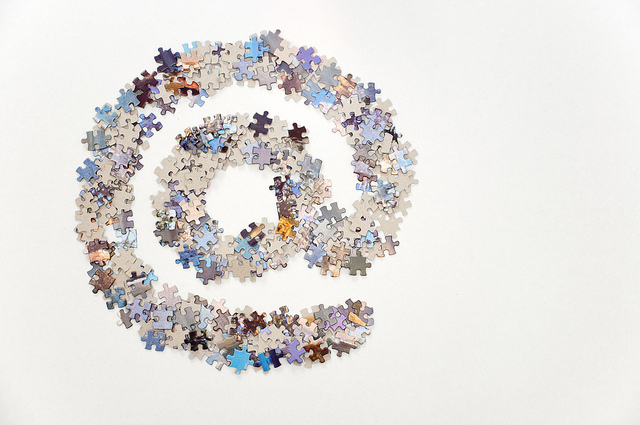
How can email be used as a health intervention?
Many are enthusiastic about the possibility of social media being used as a behavior change intervention. For some, the verdict is still out. While we continue to advance the science behind social, don’t forget about email (and search for that matter). For today, let’s look at email.
Email at Work
Oncologists who receive email reminders are more likely to ask terminally ill patients about their end-of-life wishes, according to a recent study published in the Journal of Clinical Oncology. Before the implementation of email reminders, fewer than 15% of patients had their final wishes recorded. After one year of the intervention, one-third of the patients had their final wishes recorded.
This study isn’t alone. Email reminders have helped influence emergency physician behavior. Another email intervention led to improved diet and exercise. This systematic review looked at 13 specific interventions that incorporated email prompts. And the list. doesn’t. stop. there.
Triggers and Behavior Change
I’ve been reading up on text messaging for health promotion efforts for a client-related project. A number of text-messaging vendors include email alerts and updates as a part of their offering. Why? Because emails–just like texts–can serve as triggers for behavior change or as a “gentle nudge” as KevinMD.com discussed back in 2011.
Triggers can be powerful partners in behavior change as demonstrated in the Fogg Behavior Model. We want to put hot triggers in front of motivated people. Email alerts and reminders can be a step in a chain of desired behaviors, helping to create what I refer to as, your behavior change funnel. Small steps can lead to larger outcomes.
Think about it. Why do you think non-profits put such an emphasis on email marketing as part of fundraising? Email triggers action.
Email Is Not Dead
This isn’t “new” news to a number of people in the field. But it’s a great reminder. In August 2011, Pew Research shared that “search and email still top the list of most popular online activities.” Yet a number of conversations start with social and don’t fully open the door to considering email and search (let alone move to a mobile-first discussion).
How are you using email to support your health promotion and behavior change efforts?
]]>
How can social media support prevention and wellness?
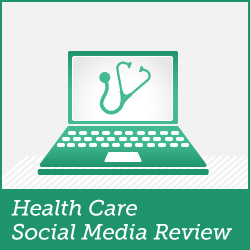 January is the month of new resolutions yet a study out of the University of Scranton finds that only 8% of us actually achieve these resolutions. At the same time, about 1 in 3 Americans plan on buying a new fitness tech in 2013. Yet as the image above reminds us, at varying degrees, health is more than a click of a button.
January is the month of new resolutions yet a study out of the University of Scranton finds that only 8% of us actually achieve these resolutions. At the same time, about 1 in 3 Americans plan on buying a new fitness tech in 2013. Yet as the image above reminds us, at varying degrees, health is more than a click of a button.
On Wednesday, Jan. 16, SocialButterfly will host the HealthCare Social Media Review, the peer reviewed blog carnival for everyone interested in health care social media. Given the importance of prevention amidst a nation with an expanding waistline, this edition will focus on how social media collides with health promotion, prevention and wellness.
You may know of a number of initiatives using social media for health promotion. Submit them. You may have supportive research. Share it. You may think it’s all a bunch of hooey. We want to hear your opinion.
To submit your post:
Email a link to your post or posts (no more than two submissions per author) by 5pm (ET) on Jan. 15.
Format your submission email as follows:
- Email Subject Line: HealthCare SocialMedia Review
- Blog Title:
- Blog URL:
- Post Headline:
- Permanent link to post:
- Your Name: Name, Username, Nickname, or Pseudonym
- Description or brief excerpt:
Learn more about the HCSM Review by visiting HealthWorks Collective or follow @healthworkscollectiv on Twitter. I look forward to your posts!
]]>
Can online, social networks really help people stop smoking?
This is what 100 experts came together to discuss in a 2-day workshop in Washington, D.C. The result was a proposed research agenda on online social networks and smoking cessation. The group proposes 34 questions they deem most pressing in four categories: advancing theory, understanding fundamental mechanisms, intervention approaches, and evaluation.
This was 2010.
There is A Need
We are on the edge of 2013. And while the Web is ubiquitous–making qualms between offline and online approaches somewhat void when we should be looking at the overall customer experience…We’re still working to better understand many of the questions proposed:
- How well do theoretical models of social influence translate between offline and online contexts?
- How does information spread through an online social network? Are there identifiable patterns of information spread that can be leveraged in intervention research?
- Can key participants in a network be identified and targeted to foster information diffusion or make it more efficient?
- What are the drivers of the viral spread of an application, concept, or innovation through online networks?
- What predicts engagement in an online social network?
All 34 questions themselves are invigorating. I encourage you to take them back to your team to fodder discussion and brainstorming. We need to be asking these questions. We need to test our ideas, explore what’s working and share it with our colleagues. But there’s a greater need.
You Can Help Solve It
As a practitioner, one item stood out among the research agenda. It’s worth filing in your back pocket and pulling out as evidence when you’re in one of those meetings:
“While there are ways in which offline and online behaviors overlap and can reciprocally inform models, mechanisms, implementation, and evaluation, there are also important differences that require critical thinking about online networks. There is a need to challenge and test the assumptions inherent in traditional models when developing, implementing, and evaluating online interventions.”
You are called to challenge traditional models–even tested ones. Rather, find inspirational models. Study them. Find what’s working. Lean on your training, work to better understand people and unwind the assumptions you bring to even the tiniest of tasks. If you’re a graphic designer for example, maybe you look into the psychology of color and how that impacts design and behavior. This is the art behind the science, so go grab your paintbrush.
What do you think about the proposed research agenda? What questions would you add?
]]>
image courtesy of nattu
What is the main source of health information for Gen Y American Indian and Alaskan Natives? Wikipedia–and they aren’t alone.
In a study published this month in the Journal of Health Communication, researchers examined the use of online health information resources used by American Indians and Alaska Natives (AIAN). The study is key as it helps fill a gap as often the AIAN population, about 4.9 million in population, is grouped under “other” in most research studies, including those conducted by the Pew Internet and American Life Project.
In Search of Insight
The study focused on American Indians in the Central Plains region of the United States specifically and provides insight for those working with members in this community. The study aimed to answer the following research questions:
- How do AIAN access the Internet?
- How important is the Internet as a health information resource for AIAN?
- Where online do AIAN go for health information?
- Does gender influence AIAN health Internet usage?
- Does age influence AIAN health Internet usage?
- How much do AIAN trust online health information?
998 Great Plains AIAN participated in the study. Some of the insights gathered include:
- Home being the primary place participants accessed the Internet.
- Email, social networking and school activities dominated Internet-use.
- 59% reported using the Internet to look for health information with 23% stated that retrieval of health information was their most important online activity. Looking closer, researchers discuss that once the Internet is perceived as useful, it is used intensively for health-related activities.
- General health and weight control information were the two main health-related uses of the Internet.
- Generation Y participants relied more heavily on collective health knowledge with 31% sharing that Wikipedia is their main source for health information. Generation X tended to frequent sites containing information from expert sources such as WebMD (37%).
- Overwhelmingly, more women used the Internet for health-related activities compared to men. Researchers suggest that health communication campaigns employing the Internet may be more effective in reaching AIAN women.
- A need for accurate gender and age tailoring for programs that use Internet resources or that address health knowledge and education among these groups.
Call to Attention
The majority of AIAN members live in metropolitan areas while 40% live on reservations or tribal land. With a median age of 29 years, AIAN represent a younger population than does the rest of the nation with about 26% living in poverty. Given my own family heritage has faint traces of Cherokee heritage (rumor has it a great, great grandpa down the line was a Cherokee Indian chief), stats like these pull on the heart strings.
The researchers note that there were “very few” Native-specific health sites and those that existed were not widely publicized. Given preliminary analysis, they share that if there were more Native-specific health sites and people know about them (don’t over look this second part), AIAN would be far more likely to use and trust those sites. Researchers also shared that while the Internet is the proper channel to reach younger audiences, when it comes to health campaigns, they stress that interpersonal communication or using peer networks may be more effective.
Are any of these findings surprising to you? What insights can you share based on your work with AIAN communities?
Citation. Mugur V. Geana, Christine Makosky Daley, Niaman Nazir, Lance Cully, Jesse
Etheridge, Caroline Bledowski, Won S. Choi & K. Allen Greiner (2012): Use of Online Health
Information Resources by American Indians. Journal of Health Communication, 17(7), 820-835. doi: 10.1080/10810730.2011.650831
]]>
